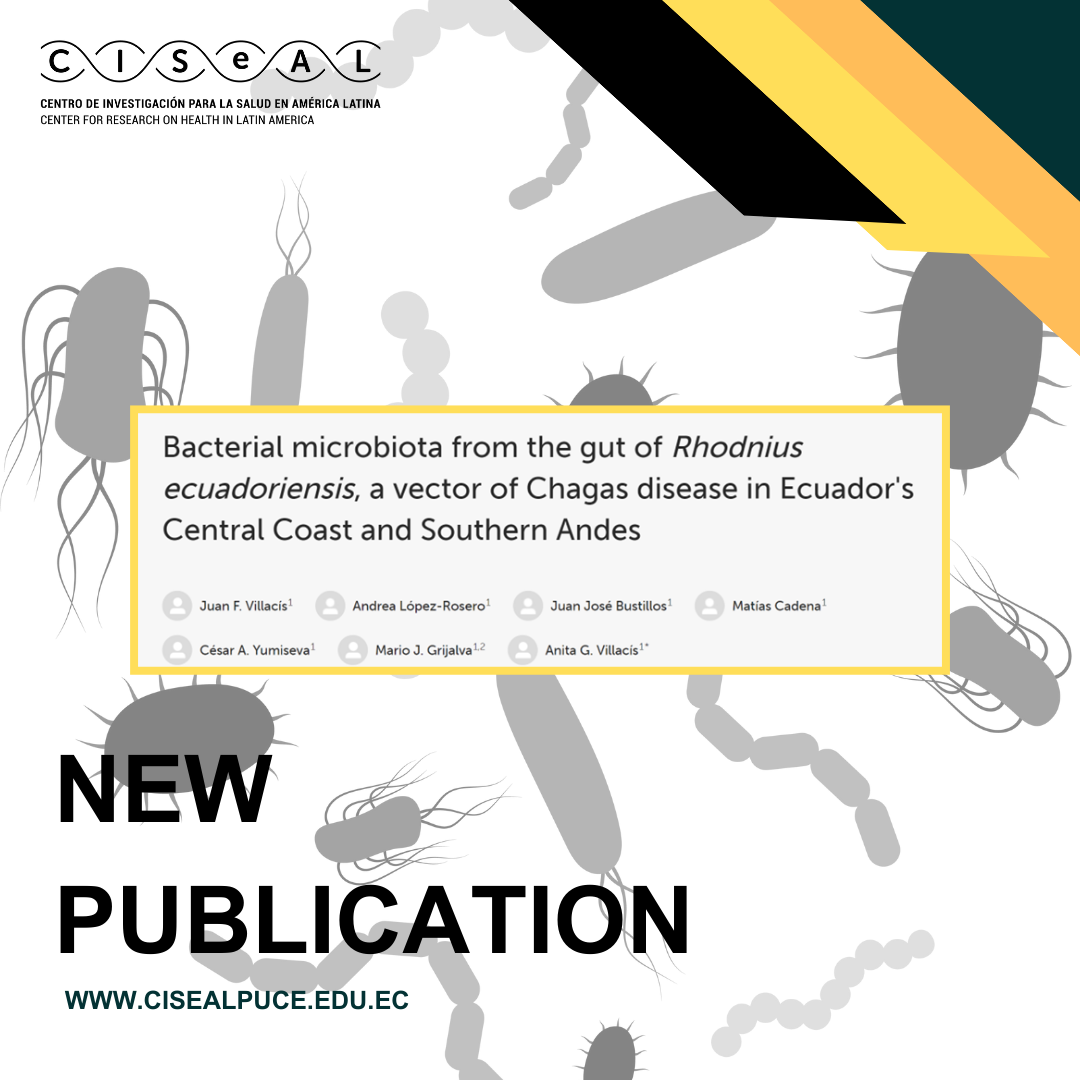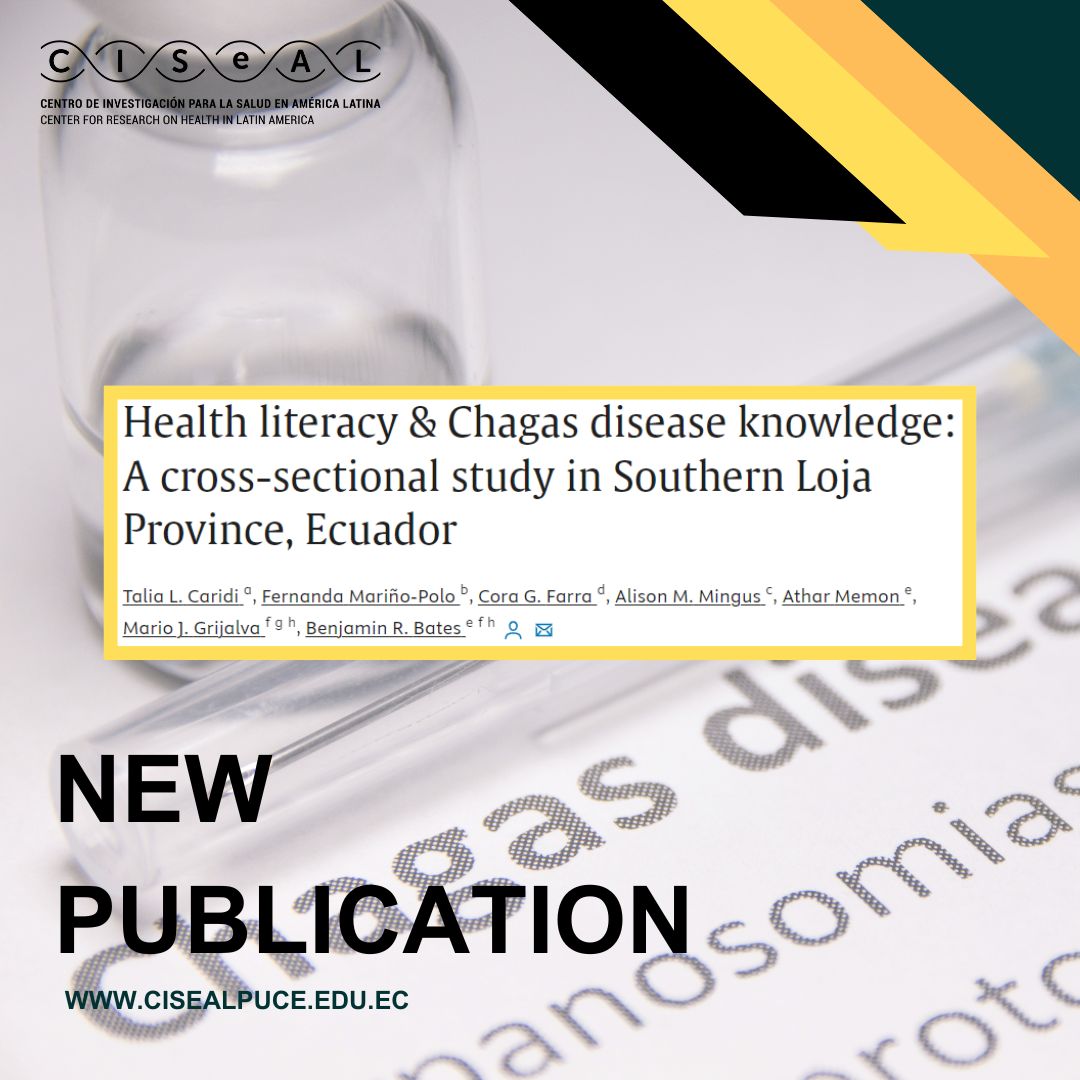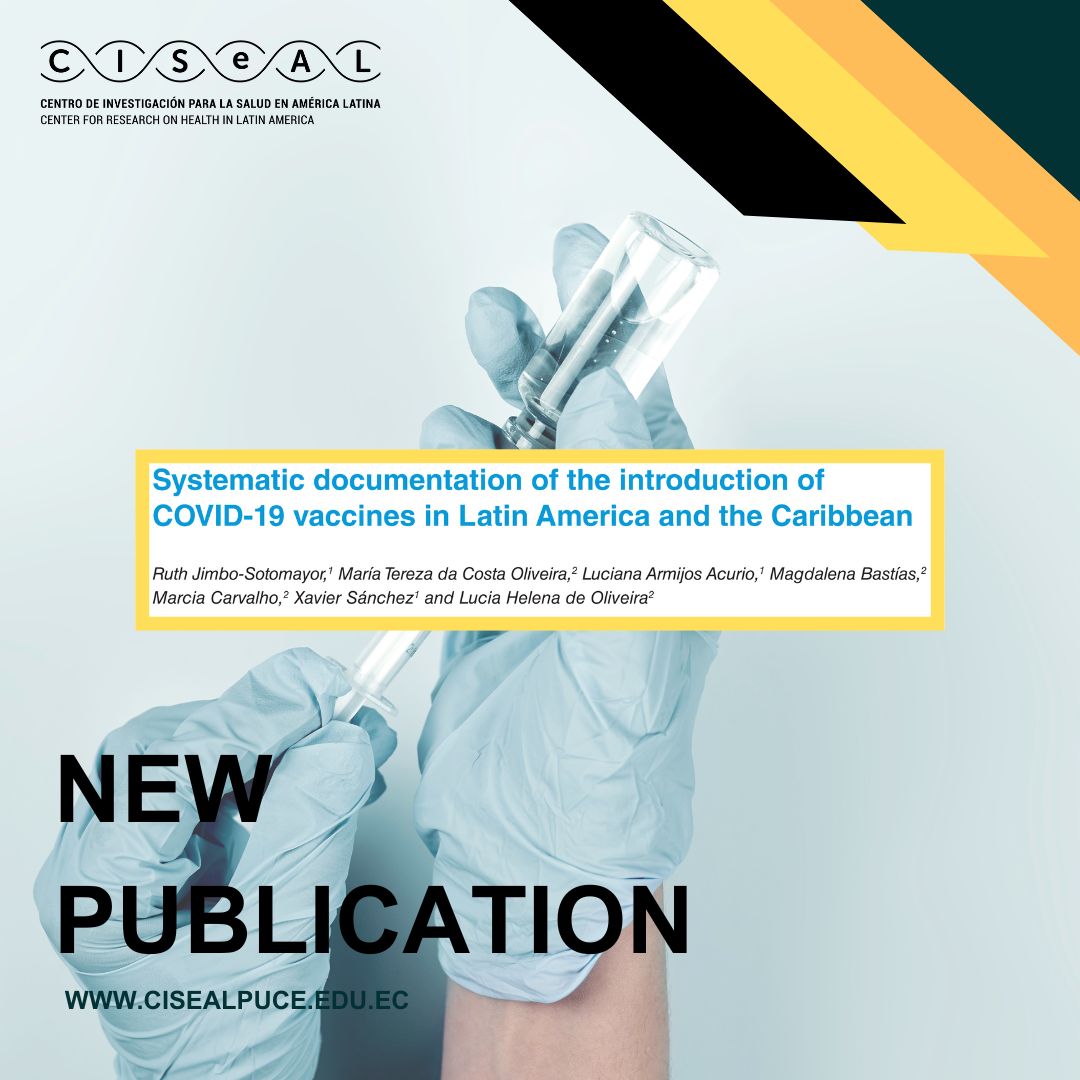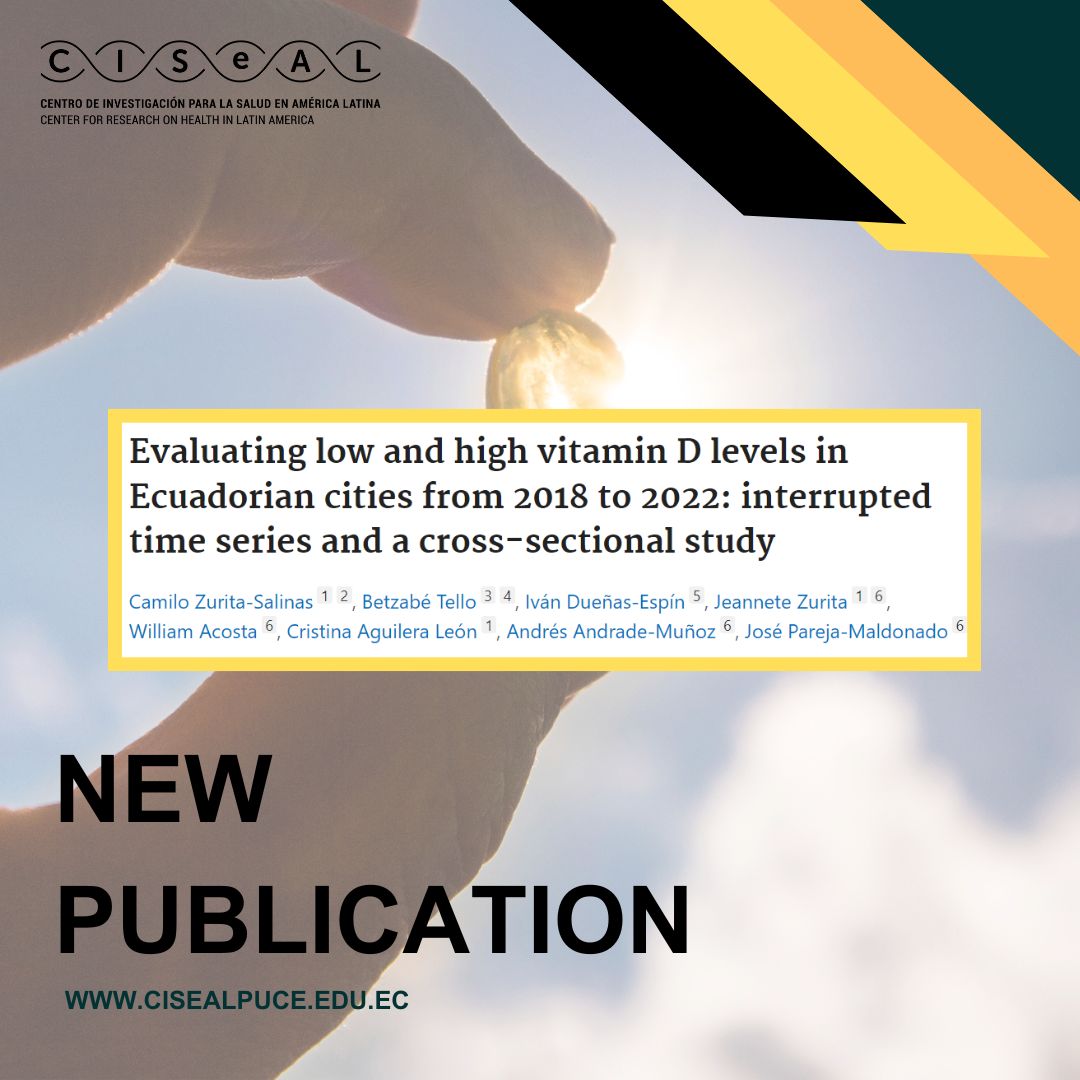
Our researchers at CISeAL, with the notable participation of Francisco Villacís under the direction of Dr. Anita Villacís, in collaboration with experts such as Dr. César Yumiseva, Dr. Mario J. Grijalva, Juan José Bustillos, Andréa López-Rosero, and Matías Cadena, have conducted pioneering research on the bacterial microbiota found in the gut of Rhodnius ecuadoriensis, the main vector in the transmission of Chagas disease on the central coast and southern Andes of Ecuador. The recently published article, titled “Bacterial microbiota from the gut of Rhodnius ecuadoriensis, a vector of Chagas disease in Ecuador's Central Coast and Southern Andes,” represents a significant advance in understanding the relationship between the intestinal microorganisms of this insect and its role in the transmission of Trypanosoma cruzi.
The study used next-generation sequencing techniques to analyze the bacteria present in the gut of this insect. Our researchers identified bacterial communities that could influence Rhodnius ecuadoriensis’s capacity to transmit the parasite that causes Chagas disease. This line of research is key, as understanding the interaction between the intestinal microbiota and the vector could open new opportunities to control disease transmission.
 Genetics is a fundamental discipline within biology that studies the structure and function of genes, genetic variability and inheritance in living organisms. Since the launch of the Human Genome Project (HGP) in the 1980s, which sought to decipher the chemical composition of the human genetic code, the importance of genetics in the biological and health sciences has been underscored. Despite technological and research advances in genetics, numerous studies have shown that health professionals have limited knowledge about personalized medicine, genetic testing and interpretation, and genetic counseling. This lack of knowledge directly affects medical practice, resulting in inappropriate referral of patients to specialized services and incorrect treatments. Training in genetics during the university career is crucial, however, there are many deficiencies in the teaching-learning process in this area.
Genetics is a fundamental discipline within biology that studies the structure and function of genes, genetic variability and inheritance in living organisms. Since the launch of the Human Genome Project (HGP) in the 1980s, which sought to decipher the chemical composition of the human genetic code, the importance of genetics in the biological and health sciences has been underscored. Despite technological and research advances in genetics, numerous studies have shown that health professionals have limited knowledge about personalized medicine, genetic testing and interpretation, and genetic counseling. This lack of knowledge directly affects medical practice, resulting in inappropriate referral of patients to specialized services and incorrect treatments. Training in genetics during the university career is crucial, however, there are many deficiencies in the teaching-learning process in this area.
In Latin America, genetics education in medical programs and its research in the general population are limited, due to health disparities, lack of genetic resources and regulations on genetic information management, and limited participation of health professionals in the subject. A previous study in Ecuador evaluated the basic knowledge of genetics in students of various disciplines, but the results are not representative of other institutions or specialized students such as medical students. This study, conducted by our CISeAL researcher Katherine Simbaña-Rivera and Dr. Damary S. Jaramillo-Aguilar, focused on determining the knowledge and attitudes towards genetic testing in final year medical students at a public university in Ecuador.
 CISeAL principal investigator Mario J. Grijalva, in the last study he was part of, shares with us an analysis of health literacy and knowledge about Chagas disease in the Province of Loja, Ecuador. The study sought to determine the relationship between people's level of health literacy and their knowledge about this disease. For this purpose, a cross-sectional survey was conducted with residents of two rural cantons who attended a mobile health clinic. These communities, characterized by their high risk of Chagas disease and limited access to health services and educational resources, provided an ideal setting for the research.
CISeAL principal investigator Mario J. Grijalva, in the last study he was part of, shares with us an analysis of health literacy and knowledge about Chagas disease in the Province of Loja, Ecuador. The study sought to determine the relationship between people's level of health literacy and their knowledge about this disease. For this purpose, a cross-sectional survey was conducted with residents of two rural cantons who attended a mobile health clinic. These communities, characterized by their high risk of Chagas disease and limited access to health services and educational resources, provided an ideal setting for the research.
The Spanish version of the Short Form Health Literacy Assessment was used to measure health literacy, while the Chagas Disease Knowledge questionnaire assessed specific knowledge about Chagas disease. Analyses included T-tests and correlational analyses to assess possible associations. In total, 85 people participated in the study, predominantly women (64.1%), married (40.7%) and with less than high school education (40.7%), with an average age of 44.31 years.

A Deep Look: How PHC Programs Are Saving Lives?
Primary health care (PHC) has proven to be an invaluable tool in the fight against child mortality in Latin America. This recent study, published in the prestigious scientific journal The Lancet Global Health, reveals that these programs have prevented more than 300,000 child deaths in the region in the last two decades.
The Role of PHC Programs: Reducing Child Mortality
The research team, formed by Ana L. Moncayo, Daniella Cavalcanti and Davide Rasella, has closely examined the impact of PHC programs in Brazil, Colombia, Ecuador and Mexico. What they found is impressive: high PHC coverage was associated with significant reductions in child mortality at all stages, from newborns to children under five.
Addressing Critical Health Challenges: Preventable and Poverty-Related Illnesses
But the impact goes beyond simply saving lives. The study also highlights the importance of addressing preventable and poverty-related diseases, such as nutritional deficiencies, anemia and gastrointestinal infections. These conditions, which disproportionately affect vulnerable communities, can be effectively combated through an expansion of PHC programs.
Looking Ahead: The Potential for Increased PHC Coverage
Predictive models suggest that increased PHC coverage could avert more than 140,000 child deaths by 2030. This means that these interventions not only save lives, but also have the potential to transform the health of Latin American communities.
Committed to Child Health in Latin America
At a time when the COVID-19 pandemic has exacerbated health inequities, PHC programs stand as a crucial strategy to address the needs of the most vulnerable populations and achieve the Sustainable Development Goals related to child health.
If you want to learn more about this important research you can visit the following link to the full article:
https://www.thelancet.com/journals/langlo/article/PIIS2214-109X(24)00094-9/fulltext
 Our CISeAL investigators, Dr. Ruth Jimbo-Sotomayor and Dr. Xavier Sanchez, led a comprehensive study documenting the process of introducing COVID-19 vaccines in selected countries in Latin America and the Caribbean. The research was conducted during the period from December 2021 to September 2022.
Our CISeAL investigators, Dr. Ruth Jimbo-Sotomayor and Dr. Xavier Sanchez, led a comprehensive study documenting the process of introducing COVID-19 vaccines in selected countries in Latin America and the Caribbean. The research was conducted during the period from December 2021 to September 2022.
For this descriptive study, a systematic evaluation of the vaccine introduction process was conducted in Argentina, Belize, Brazil, Costa Rica, Panama and Peru. Data were collected through questionnaires distributed to key stakeholders in each country. Six informants from each of the countries included in the study participated.
The results revealed a number of strengths and challenges in COVID-19 vaccination programs in the region. Among the strengths identified were the commitment of health personnel, evidence-based decision making, the development of vaccine introduction plans, and the participation of national immunization technical advisory groups. However, important challenges were also identified, such as the actions of anti-vaccine groups, problems with electronic immunization registries, vaccine shortages and delays in vaccine delivery, and lack of health personnel at the local level.
 Our CISeAL Investigator Associate, Dr. Betzabé Tello was part of a study that evaluated vitamin D levels in several Ecuadorian cities between 2018 and 2022. The study included 9285 participants whose 25-hydroxyvitamin D (25(OH)D) levels were analyzed in a private laboratory in Quito. A combined interrupted time series design and retrospective cross-sectional approach was used to identify differences in vitamin D concentrations and their relationship to the pre-pandemic and pandemic periods.
Our CISeAL Investigator Associate, Dr. Betzabé Tello was part of a study that evaluated vitamin D levels in several Ecuadorian cities between 2018 and 2022. The study included 9285 participants whose 25-hydroxyvitamin D (25(OH)D) levels were analyzed in a private laboratory in Quito. A combined interrupted time series design and retrospective cross-sectional approach was used to identify differences in vitamin D concentrations and their relationship to the pre-pandemic and pandemic periods.
The results revealed a mean 25(OH)D of 27.53 ng/mL, with a significant prevalence of vitamin D deficiency, as approximately 68.8% of participants had serum levels below 30 ng/mL. In addition, 0.6% of participants were found to have potentially harmful 25(OH)D levels, with levels greater than 100 ng/mL.

In her study entitled “The effect of physical barriers under an elevated house on mosquito entry: an experimental study in rural Gambia”, our CISeAL principal investigator, Majo Carrasco-Tenezaca, examined the impact of physical barriers on the entry of Anopheles gambiae and Mansonia mosquitoes, the main vectors of malaria. In four inhabited experimental huts located in rural Gambia, each elevated 2 meters above the ground, nocturnal collections of mosquitoes were carried out using light traps. Temperature and carbon dioxide levels were monitored inside and outside the huts, and different physical barrier treatments were applied and alternated every four nights. The experiment was conducted over 32 nights, measuring mosquito numbers and temperature in each hut.



